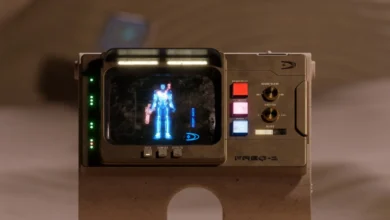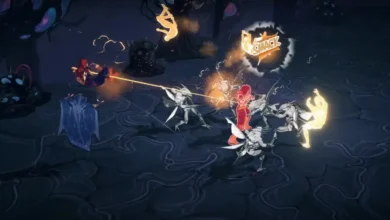Uberlaben Das Grobesprung Developer

What Is Das Überleben: Dem Großen Sprung?
Uberlaben Das Grobesprung Developer: Das Überleben: Dem Großen Sprung (often shortened or referred to as “Überleben”) is a BASE-jumping / skydiving / survival action game originally released around 2008 for Windows.
In this game, players fall through a perilous cavern environment, dodging obstacles, collecting rings, and trying to survive the descent.
Some core features and mechanics include:
-
Multiplayer support (up to 7 players on the same machine, sharing input devices)
-
A “fighting” mode where players can knock each other around during the fall
-
Randomly generated levels (cavern shapes) to vary each run
-
Different environmental “themes” or zones (like snow, molten, death star, etc.) in Version 2
-
If a player makes it to the bottom alive, the parachute kicks in and the landing is reached; if all die, replay path visuals show their trajectories upward.
Thus, the game blends arcade-style vertical action, survival elements, and competitive multiplayer in a fall / descent setting.
Developer & Publisher: Who Made It?
Developer Identity
-
The primary developer credited is Teknogames.
-
Additionally, Beau Blyth is listed as a solo developer or lead contributor in MobyGames credits.
-
Independent sources (fan wikis) also list Beau Blyth as the developer of Überleben.
From the credits, it appears this was either a small or even solo / indie project (or small team), rather than a large studio production.
Publisher / Distribution
-
The publisher is also given as Teknogames in some listings (i.e. the developer and publisher under the same label) in MobyGames.
-
The game is listed under the Windows platform, with downloadable / indie distribution (rather than big retail).
-
It seems to have been a free / shareware / indie title, referenced in independent fan forums specifying a download from the developer’s site (teknopants.com) in earlier mentions.
Thus, Das Überleben: Dem Großen Sprung is an indie / small studio creation, likely built with limited resources but creative ambition.
Gameplay, Design & Mechanics
Understanding what made Überleben unique or interesting involves diving into its design and mechanical features. Here’s a breakdown:
Core Loop & Objective
-
You fall down a vertical cavern, navigating obstacles (stalactites, walls, hazards) — the challenge is surviving the descent intact.
-
Collecting golden rings mid-fall grants mobility or attack power boosts. That adds a risk-reward dimension (go for rings or stay safe).
-
In multiplayer, you can compete either to survive the longest or to hinder other players (via fighting mode) while falling.
Environments & Level Variation
-
Version 2 includes multiple environment themes: snow, molten, “death star”, tree modes—each with its own hazard types and aesthetic style.
-
The terrain is randomly generated per run from pre-defined shape sets, so each descent has unpredictable elements.
-
Players can set cave length (difficulty) from “easy” to “endless,” giving flexibility in challenge.
Multiplayer & Input Sharing
-
The game supports up to seven players on one machine by sharing keyboard, mouse, control pads. This is rare for indie titles of that era.
-
The “fighting” option adds interference between players: you can knock each other around, adding an extra layer of chaos.
Visual & Audio Design
-
The game uses retro / pixel-style graphics or low-fi style, fitting indie aesthetic of its time. Kotaku describes it as having 8-bit retro graphics.
-
Sound is argued by fans to contribute heavily to the atmosphere, especially in tension during descent.
Difficulty & Replayability
-
The random level designs and multiple environments encourage repeated playthroughs.
-
The addition of multiplayer, fighting, different cave lengths, and themes increases replay value.
-
The difficulty curve is steep — survival is challenging, especially in harsher modes.
For those interested in indie / vertical descent games, Überleben was a creative experiment pushing constraints, multiplayer, and procedural variation.
Reception, Legacy & Community
Though not a mainstream hit, Das Überleben: Dem Großen Sprung has had some footprint in indie / fan communities.
Reception
-
On MobyGames, it is listed with minimal formal reviews; the Moby score is “n/a” (no aggregated review).
-
User commentary in forums like SystemShock.org praises the game’s concept:
“You’re a base jumper continuously falling down one deep cavern, trying to avoid the obstacles … there are several levels … good selection of options … the sound makes half of the atmosphere.”
-
Some criticism exists about the “broken German in the title,” grammatical oddities, or translation issues (the title is a bit awkward in German).
Legacy & Influence
-
The game is listed on indie game wikis and fan sites (e.g. Independent Games Wiki) as Uberleben with attributes: action, survival, multiplayer, Windows platform.
-
The game remains a curiosity among fans of retro / indie vertical descent or fall survival games.
Though not widely known today, Überleben stands as an example of ambitious independent game design in the 2000s era.
Challenges & Gaps in Developer / Historical Information
In writing about Uberlaben / Überleben, several gaps and challenges emerged due to limited public documentation:
-
Sparse developer records
Outside MobyGames and fan wikis, there are few interviews, archived developer sites, or historical coverage of Teknogames or Beau Blyth about this title. -
Broken / missing original game site
Some fan forums mention the author’s site (teknopants.com) as host for downloads, but that site may no longer be active. -
Limited press coverage
No major gaming outlet or magazine from the era appears to have given deep coverage. Most references are retro / archive / fan commentary. -
Language / title confusion
The German title is somewhat grammatically odd, which has led to confusion in naming, translation, and searching. (Some call it Das Grobesprung or Großen Sprung or “grobesprung” as you wrote). -
No remake / modern port
It does not appear that Überleben has been remastered or ported to newer operating systems, which limits contemporary exposure.
Because of these constraints, writing a fully authoritative story is difficult; but the available data still forms a reasonable narrative.
Why Überleben Matters (Even Today)
Even though Das Überleben: Dem Großen Sprung is niche, it is relevant for game historians, indie devs, and fans of vertical / survival gameplay for several reasons:
-
It is an early example of vertical survival / descent game design, blending procedural levels, obstacle avoidance, and multiplayer interference.
-
Its use of shared input multiplayer on a single machine is rare and ambitious for indie titles.
-
It showcases how a small team (or solo dev) attempted to build replayable, variable-theme content in a constrained setting.
-
As a retro indie game, it helps trace the evolution of indie mechanics and survival / fall genres.
For anyone exploring lesser-known gems or the histories of atmospheric indie titles, Überleben is a compelling case study.




